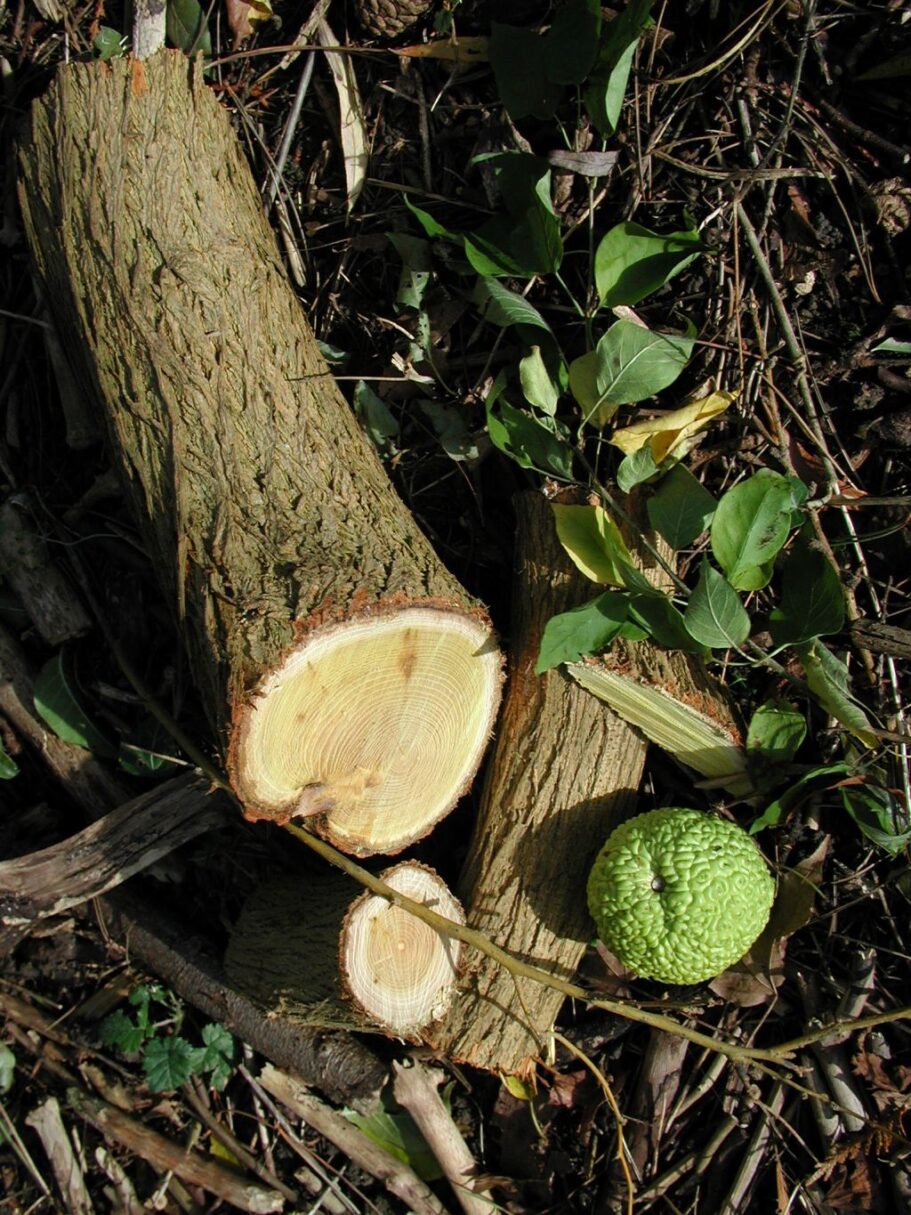#47 OSAGE ORANGE
Maclura pomifera

Can be found at the junction of the American Section and the Japanese and Chinese Section.
| Distribution: | Originated in a small area of Red River drainage in Texas, Oklahoma and Arkansas. Now widely naturalised in all contiguous States of the United States, it is also cultivated in Italy, Romania, Russia and India. Rarely grown in UK |
| Planting Date: | #46 #47 and #48 are the remains of a hedge purchased in 1916, supplier unknown, transplanted here in 1919. |
| 2019 Plantings: | Along the original hedge line #Z1, #Z2 and #Z3, from Jurassicplants Nurseries, St Asaph, Denbighshire. |
| Appearance: | Rounded dome with new growth but tall and scraggy with age. |
| Growth Habit: | Small tree |
| Bark: | Rufous, rugged, stringy, criss-cross ridged and yellow in crevices. |
| Leaf: | Shoots downy. A tiny thorn stands by each leaf bud and if the branch is cut or browsed, the thorn develops. Leaves are pointed and un-toothed to about 9 cm, glossy above and slightly downy below. |
| Flowers: | Male and female flowers are on separate trees in little green/yellow round clusters. This is a male tree. |
| Fruit: | Bright green fruit develops into knobbly spheres the size of a tennis ball. The sap contained is like PVA glue and the smell is of old fish as it ages. It is difficult to remove from the skin. |
| Toxicity: | Sawdust from the bright yellow heartwood can be a skin irritant. |
| Tree size in April 2023: | Height 7.5 m ( potentially to 15 m) and girth 94 cm |
| Uses: | A member of the Mulberry family, this deciduous tree has a very dense, hard, bright yellow, heartwood which, while being strong and flexible, is also extremely resistant to rot. In the past it was used to make yellow dye, and an ingredient in the tanning trade. Now, in the United States it is widely used as fence posts or construction in damp situations, however, it needs be worked green in order to accept nails or staples; once dried, it becomes twice as hard as White Oak (Quercus alba). The heavy close grained wood is much prized for tool handles and was traditionally used by Native Americans (Comanche tribes) to make their bows; however the dust created while working can be a skin irritant. The dried wood burns hotter, and longer, than many other woods. |
| Plant Hunter: | This was the first plant specimen to be sent back to Thomas Jefferson by the Lewis and Clarke Expedition (1804-5). |
| Introduction Date: | 1818 |
| Anecdotes and Comments: | Some sources suggest that Joseph Glidden, Illinois farmer who invented barbed wire circa 1870, was inspired by a branch of an Osage. Rated county champion in April 2023 by The Tree Register on account of its height and girth. |